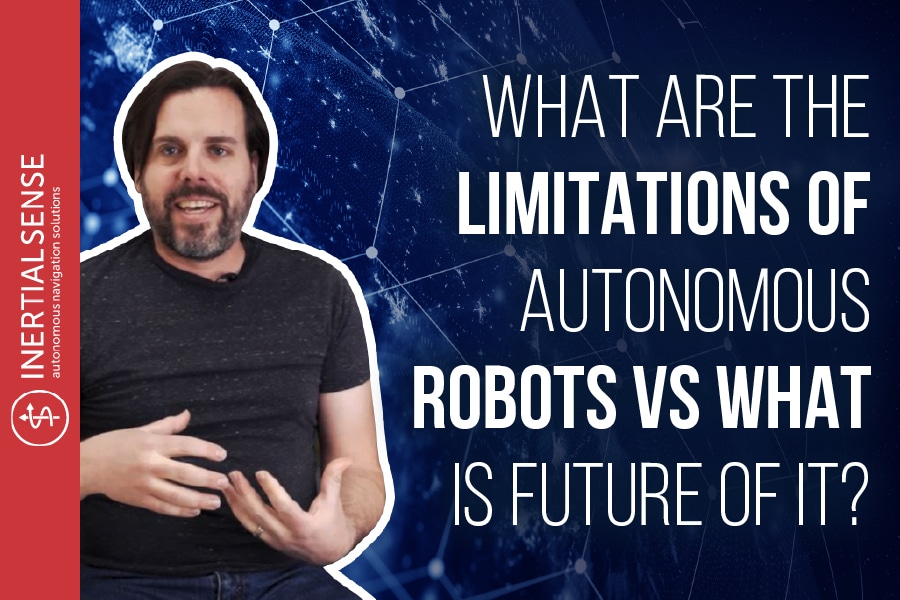
The Limitations of Autonomous Navigation
Are you curious about what Inertial Sense is doing to address the limitations of autonomous navigation? The reality is that space is limited when it comes to autonomous navigation for mobile devices, based on how good our sensors are and how well we can make choices. Watch the video below as Joshua explains how Inertial Sense is continuing to propel robotics forward despite the limitations that come with autonomous navigation.
Cameras gather videos and images, and gyroscopes and inertial sensors detect movement and GPS signals.
All these signal inputs come together to give us a sense of direction and visualization.
Inertial Sense is now introducing features like lidar and sonar, which grant the ability to sense objects around your autonomous robot to push past the limitations of autonomous navigation.
With these inputs, we are essentially programming a robot to learn how to make decisions and decide what to do with them. We are trying to teach a machine how to take all of that sensory data and make the right decision.
Inertial Sense continues to keep solving these problems while providing a really robust global autonomous robotics platform.
Learn More:
What’s The Difference Between Autonomous Robots and Controlled Robots?
What Does Autonomous Mean In Robotics?
You Must Be Good at Sensors Before You Take On Autonomy
Video Transcript
So the space that we’re limited in for autonomous mobile navigation is how good our sensors are, and how well we can make choices.
So with sensors, we need to look at the world around us through what we can visualize. We have things like cameras that can get video and images. We have things like gyroscopes and inertial sensors that can detect movement. We have GPS signals. And we’re now introducing things like lidar and sonar and being able to sense objects around us
Plus we actually have the sensors of the wheels turning, and how much the robot has moved. So all these things need to come together.
And bringing all that together is a bunch of different inputs. And sometimes the inputs, they’re noisy. So if there’s stuff going on, then that can trick those inputs with a computer.
The computer is very basic. It does this job, and this job, and this job. And so, it needs to take those inputs and decide what to do with them. And it’s a fascinating problem space because you’re trying to make a robot do what we humans do, kind of intuitively or naturally with these senses that we were born with. And now we’re trying to teach a machine how to take all of that in, all that sensory data, and make the right decision.
So it’s a hard problem, but there’s been awesome progress in this space. And we continue to keep solving these problems, to provide a really robust global autonomy platform.

